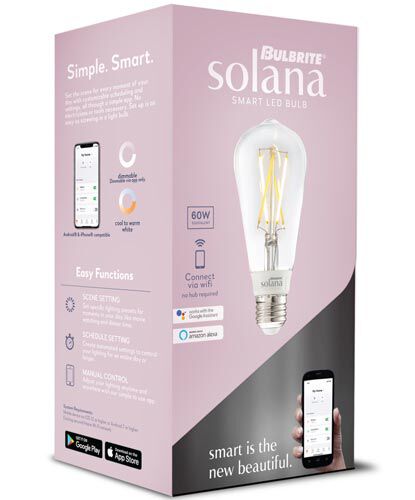Facts About LED Lighting
-
1. LEDs Were Invented in the ‘60s
The very first visible-spectrum LED light was invented back in 1962 by a General Electric scientist named Nick Holonyak, Jr. Holonyak detailed his LED discovery in the journal “Applied Physics Letters” on December 1st, 1962. Interestingly enough, Holonyak’s former graduate student, M. George Craford, invented the first yellow LED light and significantly improved the brightness of red and red-orange LEDs just ten years later. By 1987, the use of LEDs outpaced incandescent bulbs in vehicle brake lights, signal lights, and traffic lights.
-
2. LEDs Keep Going... and Going...
One of the most impressive facts about LEDs is their incredibly long lifespan (up to 25 times longer than other light sources). Consider this: You could leave an LED light bulb on 24/7 for three years before it would burn out. In fact, if you installed a new LED light in a newborn baby’s nursery, it wouldn’t need a replacement for over 20 years!
-
3. LEDs Are a New Year’s Tradition
Here’s a fun fact to bring up when you watch the iconic ball drop on New Year’s Eve. Each year, the ball is illuminated with 32,256 individual LED lights positioned behind 2,688 triangles of Waterford crystal. Talk about a dazzling sight to see!
-
4. LEDs Slow Bacterial Growth
LED bulbs are now used more frequently in fresh food displays — and for good reason. Studies have shown that LED light actually inhibits bacterial growth when compared to halogen or fluorescent bulbs.
-
5. LEDs Turn on Instantly
Incandescent and CFL bulbs experience lag time when you turn them on, so it takes a second for their light to reach its full potential. LEDs, on the other hand, reach their full brightness instantly.
-
6. LEDs Repel Bugs
Hate being bothered by mosquitoes on your porch or deck? Just replace your traditional outdoor lights with LEDs. Other bulbs produce infrared radiation and ultraviolet rays, which attract bugs. LEDs, however, do not.
-
7. LEDs are Good for the Planet
LEDs contain no mercury and are at least 95% recyclable. Additionally, if everyone in the U.S. swapped just one traditional light bulb with an LED bulb, it would be the equivalent of removing the emissions produced from 648,000 cars. If the U.S. completely switched over to LED lights, it would reduce lighting electricity consumption by nearly 50%, resulting in $250 billion saved in energy costs and 1,800 million fewer metric tons of carbon emissions in just two decades.
-
8. LED Bulbs Are Extra Durable
LED lights are surprisingly strong and fracture-resistant, which is one more reason they’re commonly used in street lights, traffic signals, brake lights, and TVs. They won’t break from being dropped on a hard surface (unlike incandescent bulbs) or leak mercury (like CFLs).
9. LEDs Aren’t Measured in Watts
When shopping for LED bulbs, you’ll want to look at lumens, not watts, for the best overall indicator of its brightness. Unlike traditional bulbs, an LED’s light output is measured in lumens (with 800 lumens equaling around 60 watts).
10. LEDs Don’t Get Hot
While an LED bulb does generate heat, it’s quickly dissipated by its diodes so that the bulb never feels too hot to the touch. (An LED light’s max temperature is only 140 degrees as opposed to 700 degrees from regular bulbs.) This is why LEDs are particularly ideal in electronics.
11. LEDs May Have the Ability to Heal
Doctors today rely on LEDs for light therapy, particularly for newborn babies diagnosed with jaundice. LED light is also associated with reduced inflammation, and it won’t raise a baby’s body temperature.
-

-
Recently Viewed
